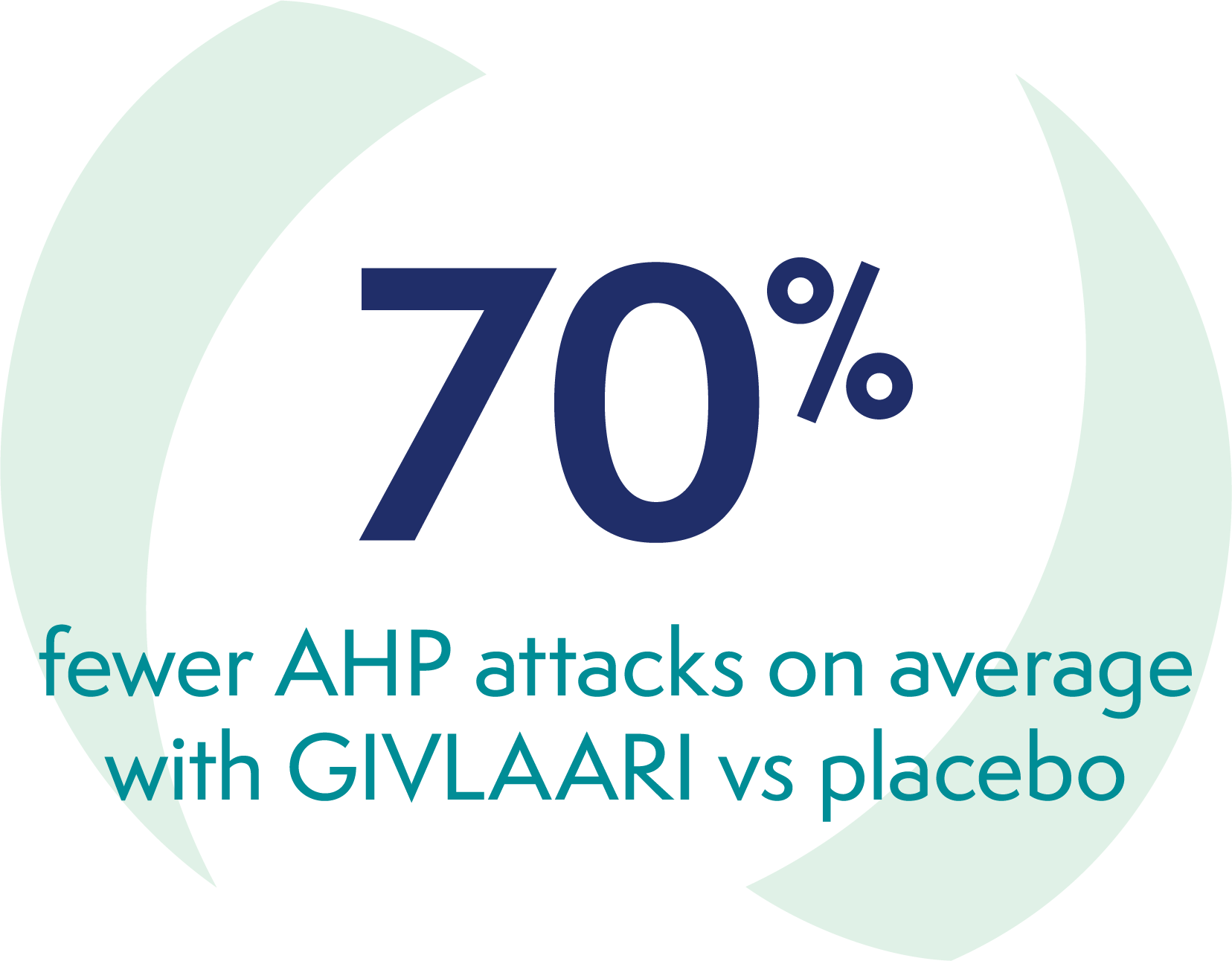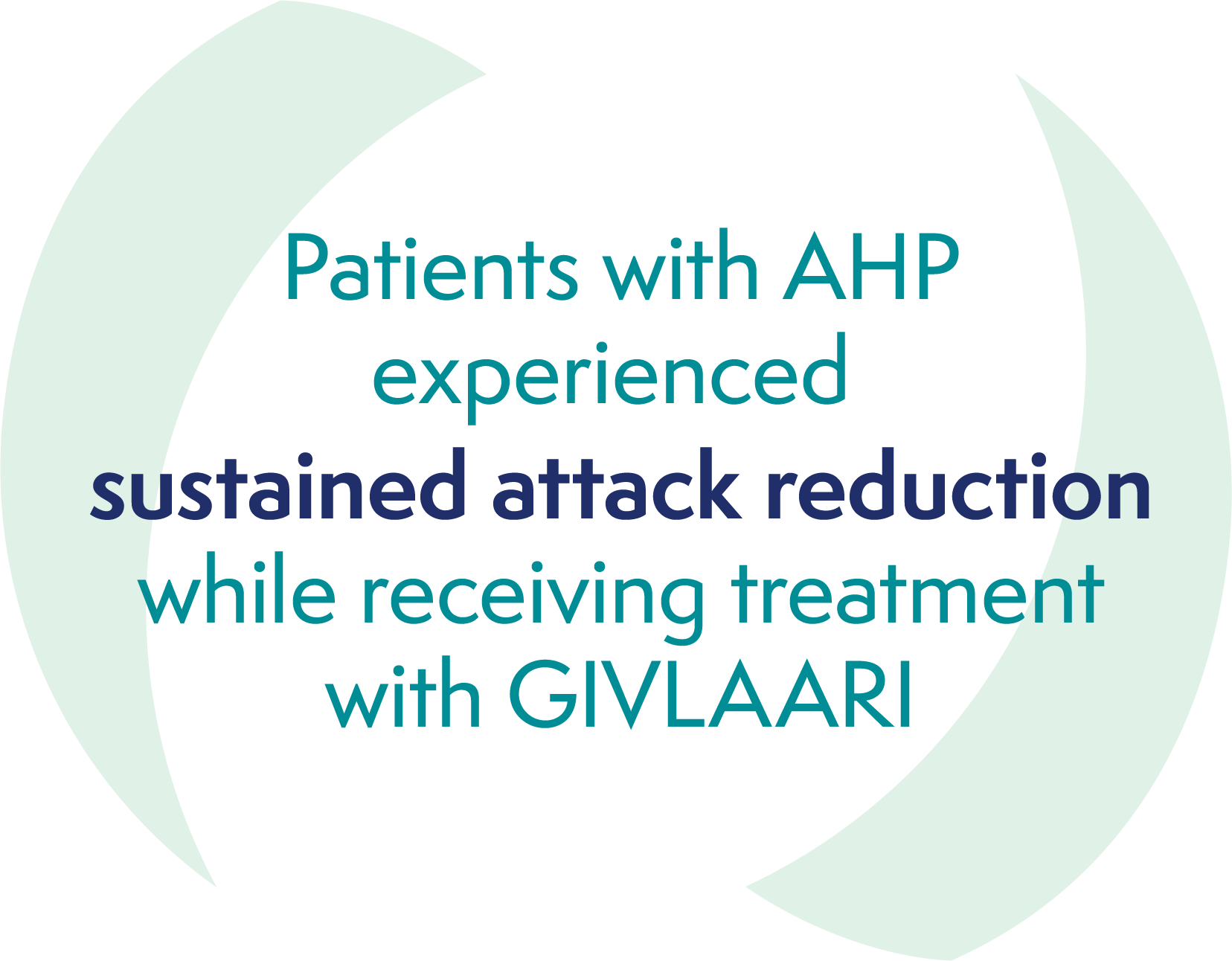IMPORTANT SAFETY INFORMATION
GIVLAARI® (givosiran) is contraindicated in patients with known severe hypersensitivity to givosiran. Reactions have included anaphylaxis.
Anaphylaxis has occurred with GIVLAARI treatment (<1% of patients in clinical trials). Ensure that medical support is available to appropriately manage anaphylactic reactions when administering GIVLAARI. Monitor for signs and symptoms of anaphylaxis. If anaphylaxis occurs, immediately discontinue administration of GIVLAARI and institute appropriate medical treatment.
Transaminase elevations (ALT) of at least 3 times the upper limit of normal (ULN) were observed in 15% of patients receiving GIVLAARI in the placebo-controlled trial. Transaminase elevations primarily occurred between 3 to 5 months following initiation of treatment.
Measure liver function tests prior to initiating treatment with GIVLAARI, repeat every month during the first 6 months of treatment, and as clinically indicated thereafter. Interrupt or discontinue treatment with GIVLAARI for severe or clinically significant transaminase elevations. In patients who have dose interruption and subsequent improvement, reduce the dose to 1.25 mg/kg once monthly. The dose may be increased to the recommended dose of 2.5 mg/kg once monthly if there is no recurrence of severe or clinically significant transaminase elevations at the 1.25 mg/kg dose.
Increases in serum creatinine levels and decreases in estimated glomerular filtration rate (eGFR) have been reported during treatment with GIVLAARI. In the placebo-controlled study, 15% of patients receiving GIVLAARI experienced a renally-related adverse reaction. The median increase in creatinine at Month 3 was 0.07 mg/dL. Monitor renal function during treatment with GIVLAARI as clinically indicated.
Injection site reactions were reported in 25% of patients receiving GIVLAARI in the placebo-controlled trial. Symptoms included erythema, pain, pruritus, rash, discoloration, or swelling around the injection site. One (2%) patient experienced a single, transient, recall reaction of erythema at a prior injection site with a subsequent dose administration.
Increases in blood homocysteine levels have occurred in patients receiving GIVLAARI. In the ENVISION study, during the open label extension, adverse reactions of blood homocysteine increased were reported in 15 of 93 (16%) patients treated with GIVLAARI. Measure blood homocysteine levels prior to initiating treatment and monitor for changes during treatment with GIVLAARI. In patients with elevated blood homocysteine levels, assess folate, vitamins B12 and B6. Consider treatment with a supplement containing vitamin B6 (as monotherapy or a multivitamin preparation).
Cases of acute pancreatitis, some severe, have been reported in patients receiving GIVLAARI. To ensure appropriate management, consider acute pancreatitis as a potential diagnosis in patients with signs/symptoms of acute pancreatitis. Consider interruption and/or discontinuation of GIVLAARI treatment for severe cases.
Concomitant use of GIVLAARI increases the concentration of CYP1A2 or CYP2D6 substrates, which may increase adverse reactions of these substrates. Avoid concomitant use of GIVLAARI with CYP1A2 or CYP2D6 substrates for which minimal concentration changes may lead to serious or life-threatening toxicities. If concomitant use is unavoidable, decrease the CYP1A2 or CYP2D6 substrate dosage in accordance with approved product labeling.
The most common adverse reactions that occurred in patients receiving GIVLAARI were nausea (27%) and injection site reactions (25%).
INDICATION
GIVLAARI is indicated for the treatment of adults with acute hepatic porphyria (AHP).
For additional information about GIVLAARI, please see full Prescribing Information.




![[99%] of patients have confirmed access icon](/sites/default/files/inline-images/1.0_Home_PrcntAccess_2.png)